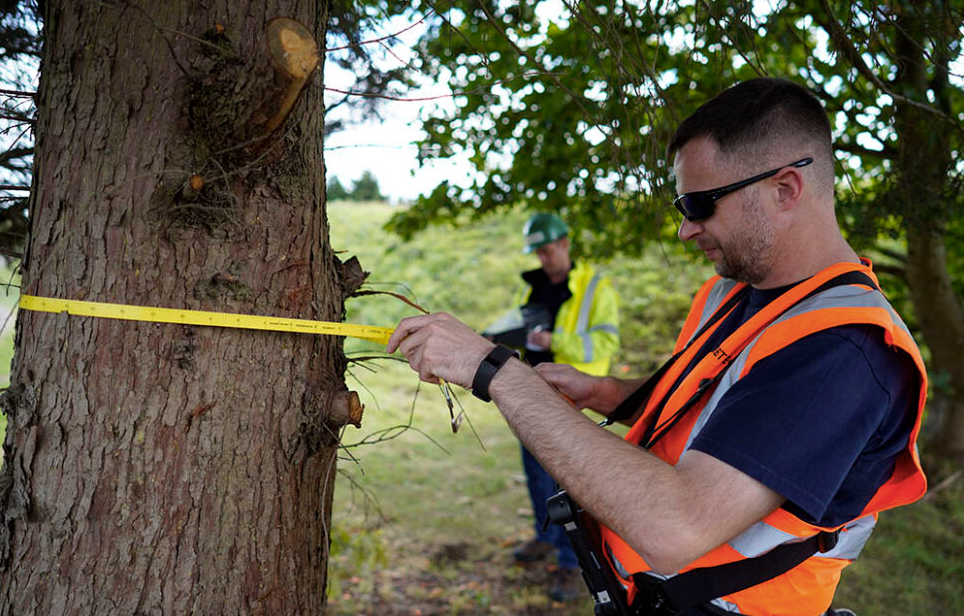Professional Tree Report: How Detailed Evaluations Support Safety, Aesthetic Value, and Urban Forestry Goals

Professional Tree Report: How Detailed Evaluations Support Safety, Aesthetic Value, and Urban Forestry Goals
It is impossible to overestimate the importance of carefully and sustainably caring for trees in our increasingly urbanised society, where green areas are havens of peace and ecological stability. A tree report serves as a crucial document that summarises essential evaluations of a tree’s health, structure, and environmental benefits. It provides developers, property owners, and conservationists with the information they need to manage trees responsibly.
A report, written by qualified arborists, explores the complex interactions between biological, structural, and environmental elements that affect a tree’s health. It goes beyond simple observation, combining thorough scientific analysis with useful suggestions to guarantee the peaceful coexistence of natural components in urban or rural environments. Stakeholders may make well-informed choices that prioritise safety, improve aesthetic appeal, and extend the lifespan of arboreal assets thanks to this thorough research.
Professional Tree Reports’ Contribution to Safety and Risk Reduction
Despite being essential for their ecological and aesthetic worth, trees may pose a risk if their structural integrity or general health are jeopardised. A well-written report provides a thorough evaluation that highlights potential hazards to persons and property, such as rotting branches, insect infestations, or unstable roots. A report is a vital tool for minimising mishaps and reducing liabilities by proactively addressing these hazards.
The scope of safety in tree management goes beyond private properties; these assessments are crucial to preserving the wellbeing of the community in public areas like parks, schools, and city sidewalks. Furthermore, corrective measures that are intended to reduce threats without jeopardising the ecological integrity of the surrounding area are often included in expert evaluations. These measures might range from targeted pruning to the whole removal of trees that have been affected. These thorough analyses highlight how important reports are to promoting a more secure cohabitation of people and the natural world.
Finding a Balance Between Practicality and Beauty: How Tree Reports Improve Landscape Design
Although trees naturally enhance a landscape’s aesthetic appeal, a well-informed strategy is necessary to achieve a balanced design that satisfies both functional requirements and aesthetic goals. Designers and property owners may make choices that balance natural beauty with structural practicality by using a report, which offers comprehensive information on a tree’s health, growth trends, and appropriateness in its current or intended surroundings.
Mature tree placement in a landscape, for example, may affect wind flow, shade, and even soil composition—all of which need to be carefully managed to maximise both attractiveness and utility. Reports also provide advice on species choices and upkeep techniques, guaranteeing that landscapes change gradually without losing their visual appeal. This careful design not only improves a property’s aesthetic appeal but also highlights the long-term effects of prudent tree care on the general quality of the landscape.
Urban Forestry Objectives and Tree Reports’ Environmental Importance
Reports are essential to the establishment of sustainable development plans in the larger urban forestry environment. The maintenance and improvement of urban tree cover become vital goals for environmental health and community well-being as cities grow and green places become more limited. Urban planners and policymakers may identify trees of ecological value, evaluate their contributions to biodiversity, carbon sequestration, and air quality, and develop conservation plans with the help of a well-prepared report.
Additionally, by providing accurate information on root systems, canopy spread, and growth potential, reports make it easier to incorporate trees into urban infrastructure projects. This knowledge ensures that development proceeds without endangering natural balance by reducing conflicts between trees and man-made constructions like buildings, roads, and pipelines. Reports are tools of environmental stewardship that promote greener and more resilient urban environments by coordinating urban forestry projects with scientifically based evaluations.
Ethical Issues and Legal Compliance in Tree Management
In addition to being a scientific activity, creating a report is an essential part of making sure that legal and ethical requirements are met. Strict laws governing tree removal, trimming, and preservation are enforced in many areas, especially for species that are protected or on heritage lists. The paperwork required to successfully negotiate these requirements is provided by a professional report, which also offers evidence-based explanations for any suggested measures.
Reports represent an ethical commitment to good environmental management that goes beyond legislative standards. They urge developers and property owners to weigh the long-term sustainability objectives against the short-term demands of their choices. By doing this, these reports highlight the moral need to behave as stewards of the environment and encourage a culture of responsibility and care for the natural world.
How Technological Developments Improve Tree Report Quality
Arboriculture has undergone a revolution thanks to the introduction of cutting-edge technology, which have greatly improved the accuracy and thoroughness of reports. Arborists can collect very accurate data on tree health, structure, and environmental context thanks to tools like geographic information systems (GIS), aerial drones, and specialist diagnostic equipment.
For instance, GIS mapping offers a geographical study of tree distribution and its effects on the surrounding ecology, while thermal imaging cameras may identify early indications of deterioration or insect infestation. These developments not only raise the calibre of evaluations but also simplify and increase the accessibility of the report producing procedure. Reports are now dynamic, data-rich documents that enable stakeholders to make educated choices about tree management thanks to technological advancements.
Strategic Tree Management to Increase Property Value
When properly cared for, trees add significantly to a property’s financial worth in addition to being a benefit to the environment. The strategic actions necessary to increase this value may be described in a well-written tree report. For example, it can specify which trees should be kept for their ecological relevance or mature beauty and which may need to be removed because of safety issues or aesthetic inconsistencies. These evaluations are especially important for houses that are getting ready for sale, since the state and look of outside areas have a significant impact on buyer perception and value.
Property owners may make sure that their trees contribute to rather than take away from the beauty of their landscapes by taking care of problems like overgrown canopies, root damage, or deteriorating health. A report also offers verified proof of upkeep and care, which reassures prospective purchasers of the property’s general quality. The clever way that tree maintenance is included into property design shows how useful reports are for encouraging both environmental responsibility and commercial success.
Conclusion:
In conclusion, creating and using a professional tree report is a revolutionary method of managing trees that tackles the complex problems of contemporary arboriculture by fusing scientific precision with real-world application. These assessments enable stakeholders to make choices that strike a compromise between short-term demands and long-term sustainability objectives by offering thorough insights into tree health, safety hazards, aesthetic potential, and environmental contributions.
Reports are essential tools for making well-informed decisions at a time when protecting natural resources is both a duty and a need. These assessments provide the clarity and direction required to confidently and carefully negotiate the intricacies of tree management, whether for private property, public areas, or urban development projects. Professional reports will surely become more and more important as we continue to acknowledge the vital role that trees play in improving environmental health and quality of life, securing their position as essential components of ethical and successful tree management.

